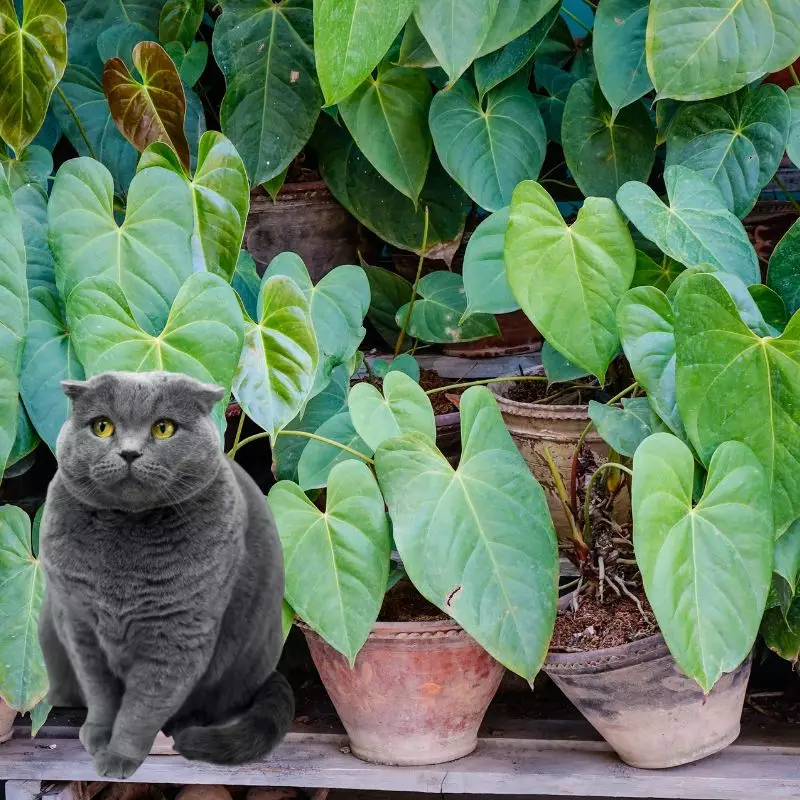Yes, the Malanga plant, also commonly referred to as caladium, elephant’s ear, and taro plant, is potentially harmful to cats. This popular ornamental plant contains insoluble calcium oxalate crystals. When a cat chews or ingests parts of the plant, these sharp crystals can pierce the soft tissues of the mouth, throat, and stomach, leading to immediate pain and discomfort. Although Malanga poisoning is not typically fatal, it can pose significant health threats if not addressed promptly. If you observe signs of Malanga poisoning in your cat, it is imperative to consult a veterinarian immediately for proper care.
This article was penned with the invaluable contributions of a team of experienced DVMs (doctors of veterinary medicine). Their expertise ensures the accuracy and timeliness of the information shared regarding the potential risks associated with various plants, specifically Malanga, for cats. Moreover, our research was bolstered by referencing high-authority websites such as ASPCA and PetMD to provide a comprehensive perspective on every plant’s potential hazards.
Clinical Signs of Malanga or Taro Plant Poisoning in Cats

If a cat comes into contact with, or ingests parts of the Malanga or Taro plant, a range of clinical symptoms can manifest due to the plant’s content of insoluble calcium oxalate crystals. Here’s an exploration of each symptom and its underlying cause:
- Oral irritation: This immediate sign is caused by the sharp calcium oxalate crystals piercing the soft tissues of the mouth upon contact or chewing, leading to a painful, burning sensation.
- Excessive salivation: A cat’s body naturally produces more saliva in an attempt to soothe the oral irritation and flush out the irritants.
- Choking and swelling of the throat: The crystals can cause physical injury to the throat’s soft tissues, leading to inflammation and swelling. This can give the sensation of choking.
- Dysphagia or difficulty swallowing: As a result of the throat’s inflammation and swelling, the normal swallowing reflex may be compromised, causing discomfort and difficulty when the cat tries to swallow.
- Extreme difficulty breathing: Severe inflammation and swelling in the throat can obstruct the airway, making it challenging for the cat to breathe.
- Dyspnea or rapid shallow gasps: This is a further manifestation of respiratory distress. As the airway becomes increasingly obstructed, the cat may resort to rapid, shallow breaths to get the necessary oxygen.
- Convulsions: In cases of massive ingestion, the cat’s body can react to the extreme pain and distress with convulsions, which are involuntary and violent muscle contractions.
- Renal failure: The absorption of large amounts of calcium oxalate crystals can impact the kidneys’ function, potentially leading to renal failure over time if not addressed.
- Coma: This is a severe neurological symptom that can occur in extreme cases. The cat’s body might go into a coma due to the combination of pain, distress, and potential toxins circulating in its system.
- Death: In rare, severe cases, and especially without timely intervention, the combination of respiratory distress, renal failure, and other complications can sadly lead to the death of the cat.
It is essential to monitor cats closely if they have been around Malanga or Taro plants and to seek veterinary care immediately upon noticing any of these symptoms.
First Aid Treatment of Malanga or Taro Plant Poisoning in Cats

If your cat ingested a part of the malanga plant, his or her mouth should be carefully rinsed and washed with water. The cat might be given yogurt, milk, cheese, or any other calcium source in order to precipitate some of the calcium oxalate crystals and alleviate the pain and discomfort he or she is experiencing.
If your cat is showing more severe symptoms, veterinary intervention is required. Fluid therapy will be most likely provided particularly if the cat has lost a lot of fluids due to continuous vomiting and diarrhea. The vet may also opt to perform gastric lavage and prescribe Kapectolin or sucralfate to protect the stomach and prevent further irritation.
Swelling is one of the negative effects of being exposed to insoluble calcium oxalate crystals. This may not appear to be a significant problem, but it can cause your cat’s airway to expand and make breathing difficult. A dose of Benadryl given by the veterinarian can help prevent this condition.
Recovery from Malanga or Taro Plant Poisoning in Cats

Most cats get better as soon the symptoms of malanga poisoning subside. However, if your cat has any issues, such as dehydration or airway edema, he may be needed to stay with the vet for prolonged monitoring.
Prevention of Malanga or Taro Plant Poisoning in Cats
Poisoning prevention can be done by removing the malanga plant in your home and making your cat stay indoors as much as possible. This will minimize your cat’s risk of exposure to the said plant and to other poisonous plants in your neighborhood as well.
If you love plants but have cats at home, check out these lists:





